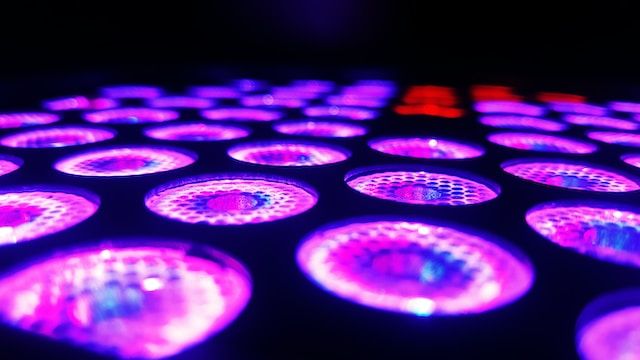
Get a Quote
What is the Difference Between LED Screens and Projection Screens?
In the world of visual displays, LED screens and projection screens stand as two prominent options, each with its own set of advantages and applications. If you're looking to understand the fundamental differences between these technologies, this beginner's guide is here to help. We'll walk you through the intricacies of LED screens and projection screens, providing valuable insights to assist you in choosing the right solution for your specific needs.
What are LED Screens?
Let's begin by shedding light on LED screens, a technology that's becoming increasingly popular for various applications. LED stands for "Light Emitting Diode," and LED screens are composed of thousands of tiny LED modules that emit light when an electrical current passes through them.
LED screens are known for their exceptional brightness and vibrant colors. They offer high resolution and sharp image quality, making them an ideal choice for scenarios where visuals need to be eye-catching and crystal clear. The image is created pixel by pixel, ensuring a superior level of detail. LED screens are commonly used for indoor and outdoor advertising, live events, digital signage, and even in homes for home theaters and gaming.
What are Projection Screens?
On the other hand, projection screens are based on a different principle. Instead of individual light-emitting diodes, projection screens work with projectors. These projectors beam light onto the screen, creating an image. Projection screens are known for their versatility and have been used for a long time in various settings, including classrooms, theaters, and business presentations.
Projection screens are highly adaptable in terms of screen size, making them a preferred choice for large venues and events. However, their image quality can vary depending on factors like ambient light, screen material, and the quality of the projector being used. These screens come in various types, including fixed frame screens, portable screens, and motorized retractable screens.
Differences in Technology
LED screens and projection screens differ fundamentally in their technology. LED screens are self-contained units with each module emitting its own light, while projection screens rely on an external projector to cast an image.
The technology behind LED screens, with its pixel-by-pixel image creation, offers superior image quality, color accuracy, and sharpness. Projection screens, while versatile in terms of screen size, may struggle to match the image quality of LEDs, especially in well-lit environments.
Image Quality and Brightness
When it comes to image quality, LED screens are the clear winner. These screens offer excellent contrast ratios and deep blacks, resulting in vibrant and clear visuals. The image is consistent, even in well-lit environments. This makes LED screens ideal for scenarios where image quality is paramount.
Projection screens, on the other hand, can struggle with maintaining image quality in brightly lit spaces. They rely heavily on the quality of the projector being used and the ambient light conditions. In dark environments, projection screens can provide good image quality, but they may not match the vividness of LED screens.
Resolution and Screen Size
Resolution plays a vital role in determining the clarity and detail of the visuals. LED screens typically offer high-resolution displays, and this is one of their major strengths. Whether it's a small LED screen or a massive video wall, each pixel contributes to a sharp and clear image.
Projection screens can be adapted to various screen sizes, making them an excellent choice for large displays. However, achieving high resolution on a large projection screen can be challenging. It's essential to balance size and resolution when choosing a projection screen.
Flexibility and Installation
LED screens provide a high level of flexibility in terms of size and shape. Their modular nature allows for custom screen designs, making them suitable for both creative and practical applications. Whether you need a curved screen or a unique shape, LED screens can be tailored to your requirements. Installation is typically straightforward, with the option for both temporary and permanent setups.
Projection screens, while versatile in screen size, are less flexible in terms of shape. They come in standard formats, and customization options are limited. Installation involves setting up a projector and screen, which can be more time-consuming and complex for larger screens.
Cost Considerations
When considering the cost, it's important to note that LED screens generally have a higher upfront investment. However, their long-term costs can be lower due to their durability, low power consumption, and minimal maintenance. Projection screens may have a lower initial cost, but maintenance and replacement costs can add up over time.
Pros and Cons of LED Screens
Pros:
- Superior image quality
- Vibrant colors and sharpness
- Suitable for well-lit environments
- Low maintenance
Cons:
- Higher initial cost
- Limited flexibility in screen size
Pros and Cons of Projection Screens
Pros:
- Versatile in screen size
- Lower initial cost
- Well-suited for dark environments
Cons:
- Image quality can be affected by ambient light
- Limited customization options
- Choosing the Right Screen for Your Needs
When it comes to choosing between LED screens and projection screens, it's essential to assess your specific requirements. Consider factors like your budget, the environment in which the screen will be used, the intended purpose, and the available space. EachinLED offers a range of LED screen options that cater to different needs. Whether it's for an indoor conference, an outdoor event, or a permanent installation, understanding your unique requirements is key to making the right choice.
Conclusion
In conclusion, LED screens and projection screens offer distinct advantages and are suited for different scenarios. Each has its strengths, and the choice ultimately depends on your specific needs. If image quality, brightness, and flexibility are your priorities, LED screens may be the better option. However, if you require versatility in screen size and are working within a limited budget, projection screens can be a practical choice. By understanding the differences between these technologies, you can make an informed decision that aligns with your goals.
If you're interested in exploring LED screens and their applications further, visit our website at EachinLED.com. We offer a wide range of LED screen options and expert advice to help you make the right choice for your needs.
Remember, when choosing between LED and projection screens, understanding your unique needs is key to making the right decision.


